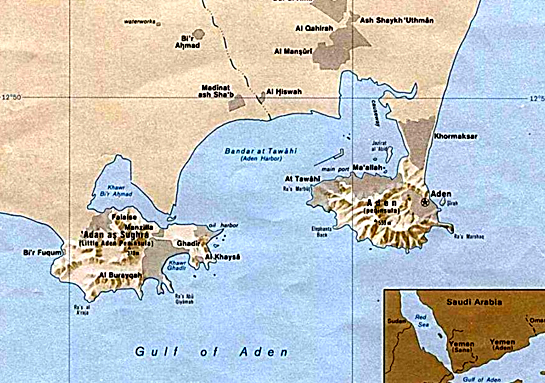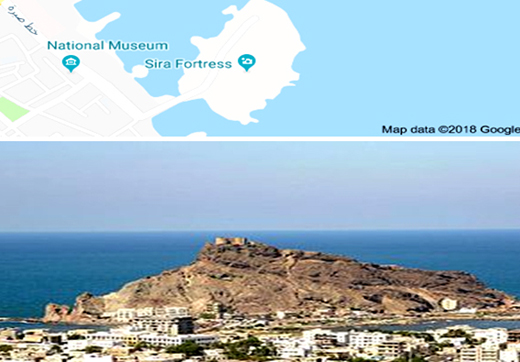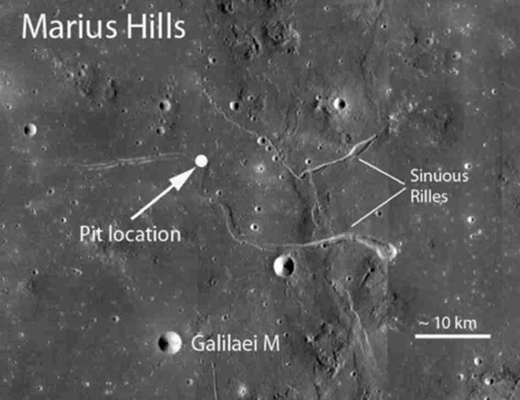Ibn Al Mujawir’s Hanuman Tunnel
Ibn Al Mujawir’s Hanuman Tunnel
Mangalore Today News Network
By Dr G ShreeKumar Menon
Mangaluru, August 7, 2018: Countries around the world while transforming into multi racial and multi religious democracies are also facing the heat of social unrest and conflicts between various religious groups. While governments, judicial organizations and human rights groups grapple to ameliorate this intractable problem, events from the ancient past throw up interesting lessons in religious harmony. The Indian superhero demi god Hanuman’s feat of supernatural engineering is one of the examples of Aden’s extraordinary cosmological and historical connections to India. The Arabic version of the Ramayana that Ibn Al Mujawir narrates, tells about the entrance to a tunnel connecting Arabia with India, with its egress in Ujjaini, the capital of the ancient kingdom of Malwa. The other end of the tunnel is believed to open in Sira Island in Aden’s harbor.


Positioned at the crossroads of the maritime routes linking the Indian Ocean and the Mediterranean Sea, the Yemeni port of Aden was one of the medieval world’s greatest commercial hubs. Aden’s natural harbor lies in the crater of a dormant volcano, which now forms a peninsula joined to the mainland by a low isthmus. This harbor was first used by the ancient Kingdom of Awsan between the 5th and 7th centuries BC. The modern harbor is on the other side of the peninsula. Aden gives its name to the Gulf of Aden.
This tunnel connecting Ujjain and Aden was supposed to have been excavated by Hanuman. Sita according to this narrative was abducted by the demon Hadathar who wanted to transform her into a Jinn. Hanuman a demon in the form of a monkey proceeded to dig the tunnel to rescue Sita. Tunneling through the night, he arrived to find Sita asleep beneath a thorn tree and throwing her on his back, returned her safely back to Lord Ram. Das Sir, the jinn with ten heads, also used Aden as a prison for his enemies. Das Sir lived “on Jabal al-Manzar and took walks on the sands of Huqqat.” When he died, Hanuman took up residence in his place. Whether this was before, after or as a result of the latter’s rescue of Sita is not told. Predictably, among its many names, Ibn al-Mujawir, notes Aden was often referred to as Muqam al-jinn—Abode of the jinn. As we can see, this version of the Ramayana differs significantly from the one with which we are familiar with. Hanuman sought to rescue Sita the wife of Lord Ramchandra not from Ravana, the King of Lanka, but from the demon “Hadathar.” Rather than build a bridge he dug a tunnel. Ibn al Mujawir is emphatic that the tunnel dug by Hanuman remains intact even now. Ibn al-Mujawir cited his anecdotes from a local Yemeni chronicle, Kitab al-Mufi d fi Akhbar al- Zabid. The tale of Hanuman was told to him by his father’s client, Mubarak al-Sharabi.
This amazing version of the Ramayana is recorded in the Tarikh al-Mustabsir which was written in the early quarter of the thirteenth century by Ibn al-Mujawir. The text is a fascinating account of the western and southern areas of the Arabian Peninsula by a man from the east of the Islamic world, probably from Khurasan in Iran. Ibn al-Mujawir was a man who in all probability followed the age-old Islamic practice of making the pilgrimage to Mecca and thereafter travelling in the area to further his business interests. His route began in Mecca and essentially ran south through the Red Sea coastal plain, Tihamah, down into the Yemen and along the southern coast of the peninsula. He stayed back in Aden, where he observed closely the activities of the port to report at length on its administration, taxes, markets, currency, weights and measures, and the like. His route then continued along the southern coast of Arabia into the Gulf, and he presumably returned home to the east via Iraq. The author is a wonderful observer of people: their buildings, their dress, their customs, their agriculture, their food and their history. This book is a unique source for the social and economic history of thirteenth-century south Arabia. The text is of major linguistic importance too, as it is written not in pure classical Arabic.
Ujjain is literally the crossroad of Space and Time. This renowned and ancient city in India is famous for spiritual as well as scientific reasons. It has stood, quite literally, at the very centre of the development of astronomy as a science, as well as an instrument of spiritual knowledge and practice. It is the cradle of the Hindu science of astronomy and Timekeeping, and the principal seat of astronomical knowledge during its early history. It occupied this position because it is uniquely situated where India’s ancient Prime Meridian and the Tropic of Cancer once crossed. Hence, Lord Mahakaal, the presiding deity of Ujjain is considered to be the God of Time.
Ujjain is best known as an ideal place for calculation of time and calendar science and is known as the ‘Greenwich of India’. Indicating the great age of India’s zero longitude, or Prime Meridian, of Avanti, the ancient name for the historic city of Ujjain, it is situated 23.9 degree northern latitude and 74.75 degree eastern longitude at an altitude of 1658 ft, and is situated on Topic of Cancer and hence a big centre for calculation of time.
There is another important astronomical line connected to Ujjain. Traditionally the Tropic of Cancer is thought to pass through Ujjain, specifically through the temple known as Karkoteshwar, located within the compound of the Harsiddhi Temple in Ujjain. The Tropic of Cancer is the line of the most Northern position of the Sun in its yearly course. From mid-winter till mid-summer the Sun’s course is north. In India this is called Uttarayana. Between mid-summer and mid-winter the Sun moves south, and is called Dakshinayana. These are not real but apparent movements caused by the tilt of the earth’s axis. It is the reason for the cause of the seasons on our planet. Even today, wherever a person is born, when a panchang or horoscope as per the Hindu almanac is drawn up, it is always based on Ujjain time (roughly 29 minutes behind IST).
There is another very interesting theory known as Hollow Earth theory that proposes that the Earth, and other planets throughout the universe, might have underground hollow cores. This concept primarily focuses around entrance points at the magnetic poles along with alternative entrance routes, back doors if you will, accessible from various points on the Earth’s surface including entryways below the Great Pyramid, Mayan ruins, and more. Cavern systems found throughout the world support the idea of hollow structures existing below the Earth’s surface. The Arabic version of the Ramayana postulates the existence of a tunnel connecting Ujjain and Aden. There is speculation in the scientific community that similar tunnels could exist on other Planets, including the Moon. A new research effort has uncovered large holes on the lunar surface near the Moon’s North Pole, and scientists believe they might hint at a huge subsurface tunnel network.
The bizarre holes were spotted by researchers working with the SETI Institute and Mars Institute, both of which used imagery from NASA’s Lunar Reconnaissance Orbiter. The tunnels are thought to be the remains of ancient lava tubes where liquid rock once flowed beneath the Moon’s surface. Over time, the magma flow ceased and large hollow tubes are all that remains. A study published in the science journal Geophysical Research Letters has confirmed that an enormous, open lava tube has been found in the Marius Hills region of the Moon.

Similar to the tunnels, scientists are propounding the concept of wormholes that exist across the Universe, thereby enabling travelling enormous distances across Space-Time. A wormhole, also known as an Einstein-Rosen bridge is a theoretical method of folding space and time so that you could connect two places in space together. You could then travel instantaneously from one place to another.
Another historian of recent origin, born in 1919, Hamza Luqman who made his mark as a local historian, wrote two works of the earliest period: Tarikh ‘adan wa janub al-jazira al-arabiyya (A History of Aden and Southern Arabia) published in 1960 and an undated typescript in English, Stories from the History of Aden and Southern Arabia, that appears to be from the early 1960s. The legend of Hanuman and his supernatural feat of constructing a tunnel between Ujjain and Aden appear in this work also.
Ibn Al Mujawir signals an ontology that conceives India and Arabia as connected not merely through physical space but also via the spiritual. The port emerges as a city linked to its wider geographic context not only by winds and ocean currents but also by feats of superhuman engineering and enchanted alternate dimensions. The physical space frequently intersects with the metaphysical, mysteriously linking the port city of Aden and the ancient Indian city of Ujjain, which once represented the center of the Earth.
• Reference
Imperial Muslims by Scott S. Reese
Hanuman’s Tunnel: Collapsing the Space between Hind and Arabia in the Arab Imaginary
 About the author: Dr G ShreeKumar Menon, IRS (Rtd) Ph.D (Narcotics) is a Former Director General, National Academy of Customs Excise and Narcotics & Multi Disciplinary School of Economic Intelligence; Fellow, James Martin Center for Non Proliferation Studies, USA; Public Administration, Maxwell School of Public Administration, Syracuse University, USA and AOTS Scholar, Japan. He presently serves as Registrar, Yenepoya University, Mangalore – 575018. He may be reached at shreemenon48@gmail.com
About the author: Dr G ShreeKumar Menon, IRS (Rtd) Ph.D (Narcotics) is a Former Director General, National Academy of Customs Excise and Narcotics & Multi Disciplinary School of Economic Intelligence; Fellow, James Martin Center for Non Proliferation Studies, USA; Public Administration, Maxwell School of Public Administration, Syracuse University, USA and AOTS Scholar, Japan. He presently serves as Registrar, Yenepoya University, Mangalore – 575018. He may be reached at shreemenon48@gmail.com
- Spiking of drinks, a grave threat for students’ security
- Burden of drugs and substance use among university students in India
- Mangalore medic’s miracle in Bombay 1957
- Needed a national protocol for treatment of substance use disorders
- The Lingering Menace of Drug Abuse Among the Indian Youth—It’s Time for Action
- Need For ‘Students, Alcohol and Drugs’ survey
- New Synthetic Drugs Trapping Youth
- Mood Modifying Chips - Future of Drug Use
- Ramping up Indo-Bangla border security
- IITM- A premier educational Institution in a forest. What can we learn?
- Former PM, Manmohan Singh: Notable laws passed under his tenure
- Hashish on Ratnagiri Seashore
- The Poor cry out to Us: Do we respond?
- Kashmir Bhavan in Bengaluru: A must visit place
- "MAI and I" Book of Angelic Emotions
- Draupadi Murmu - The New ’President of India’
- Anthony Ashram in the city grows a classic museum
- First College of Fisheries in India - A Golden Jubilarian
- Flushing Meadows - A Vintage Mansion
- The Colonel’s Bequest
- A Mangalorean PM and his RBI Governor Brother: The Extraordinary story of the Benegal Brothers
- There is no higher religion than Truth: Theosophical Society
- L’affaire - Ashu & Yiju of Mangalore
- Mangalore in Kowloon
- 1568 to 2018 AD: 450 years of Christianity in Mangaluru
- Vice President elect Naidu moves on from nadir to zenith, the phenomenal journey
- Embracing the Outdoors: How Heated Jackets Are Revolutionizing Cold Weather Activities
- Efficient and Sustainable Packaging Solutions with FIBCs
- The Hybrid Kilt Revolution | Where Tradition Gets Trendy
- Affordable Elegance | Embrace Style on a Budget with Cheap Kilts
- Unleashing Style and Functionality | Exploring Tactical Kilts
- Mangalore’s Heroic Lady marks 105th Birthday
- Santa the Christmas spirit
- Geriatric care: Mangalore strikes a fine balance
- The Don Who Made Two Empires to Clash
- CHITRAPUR SARASWATS - A Great Kanara Community
- Our new President Ram Nath Kovind’s significant journey to Rashtrapathi Bhavan
- Marriages made in heaven, big fat weddings made in India
- Eid insight - The giver of glad tidings
- CITY INFORMATION
- TRAVEL
- TOURIST INFORMATION
- HEALTH CARE
- MISCELLANEOUS




 Write Comment
Write Comment E-Mail To a Friend
E-Mail To a Friend Facebook
Facebook Twitter
Twitter  Print
Print 


